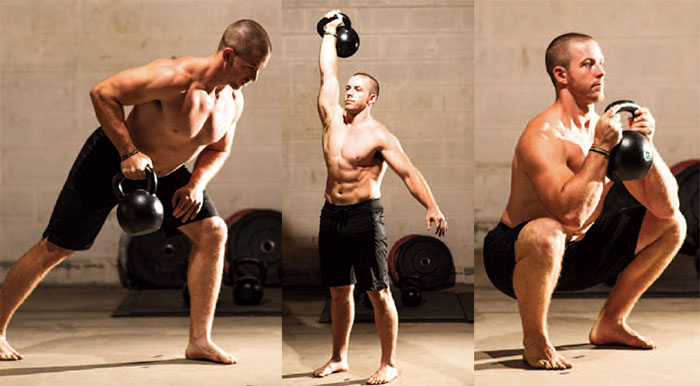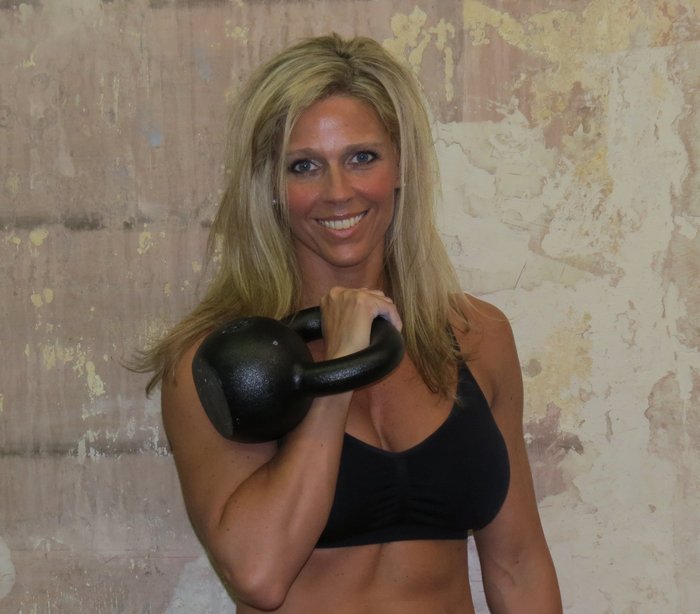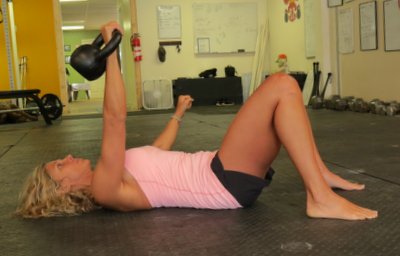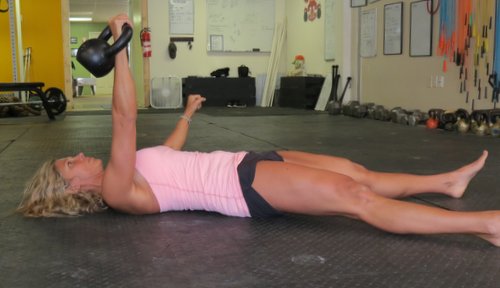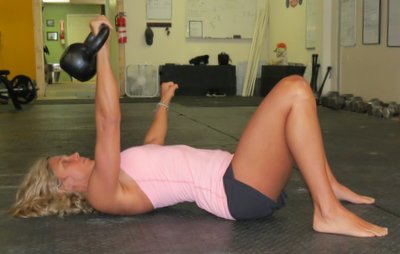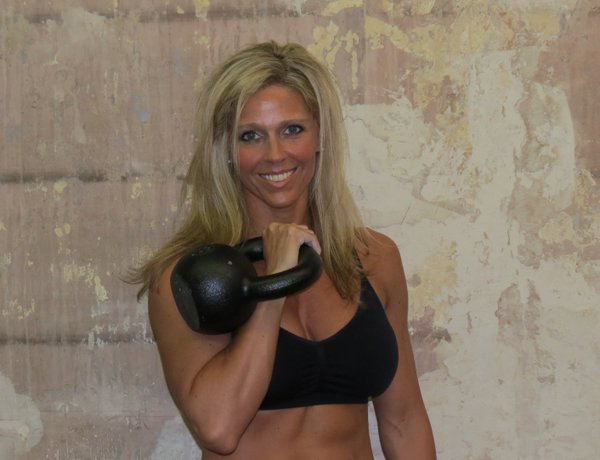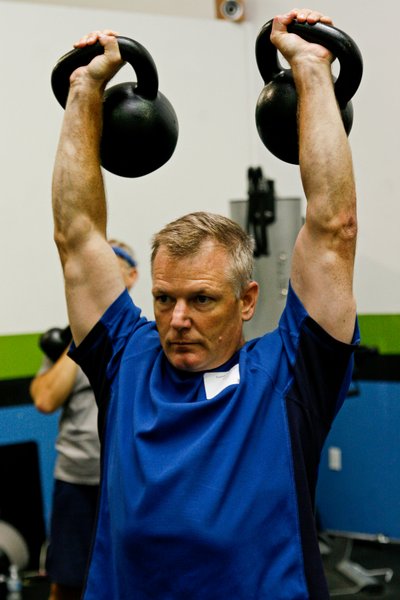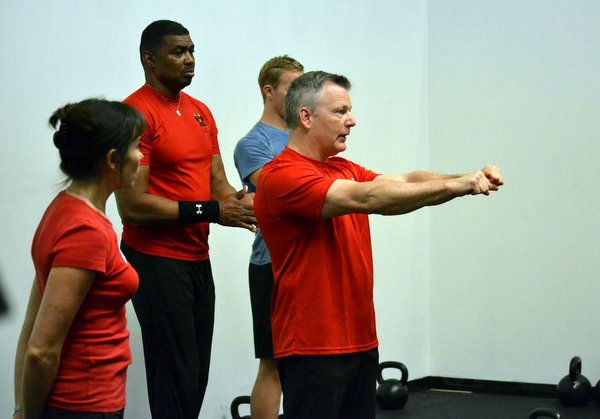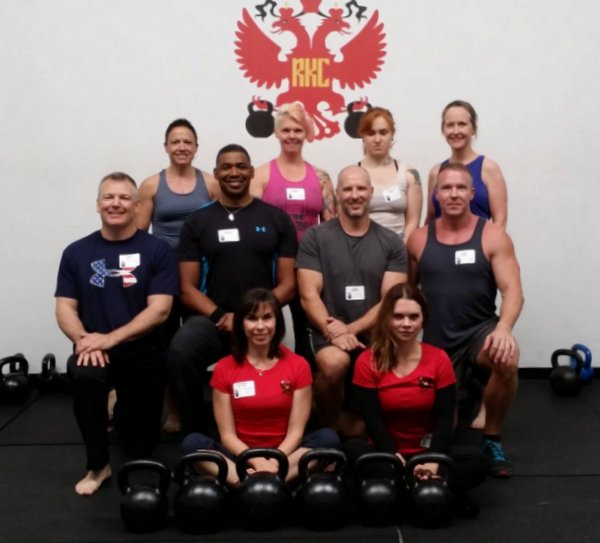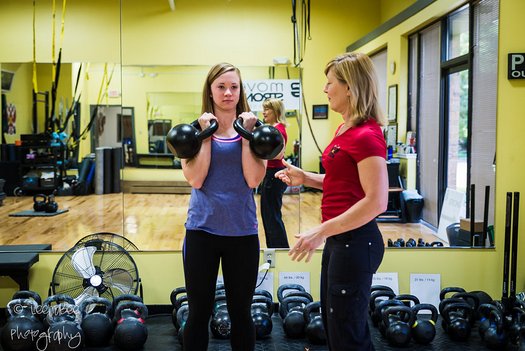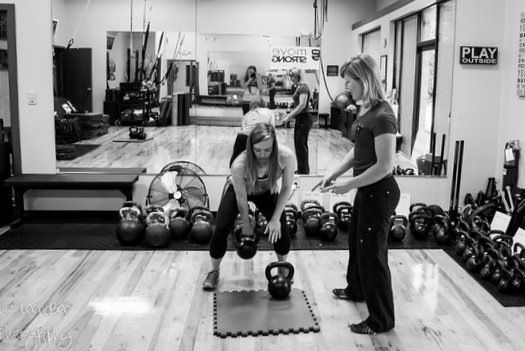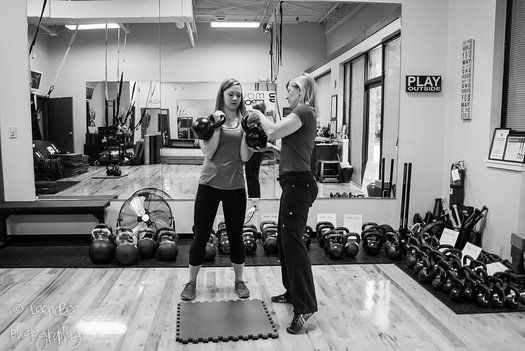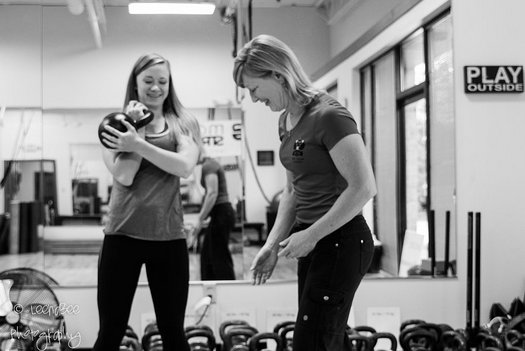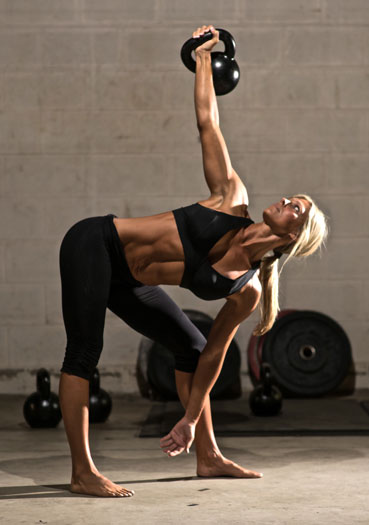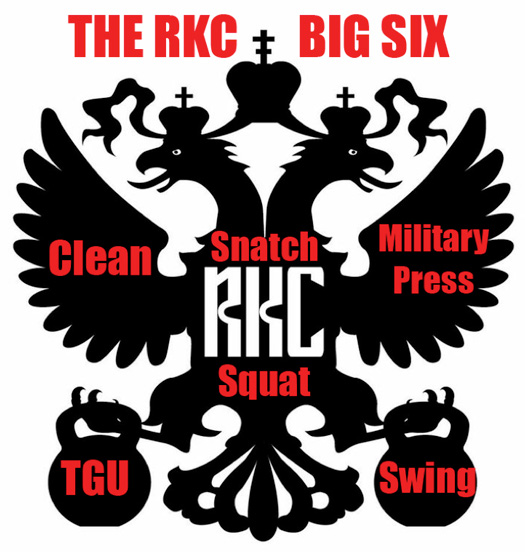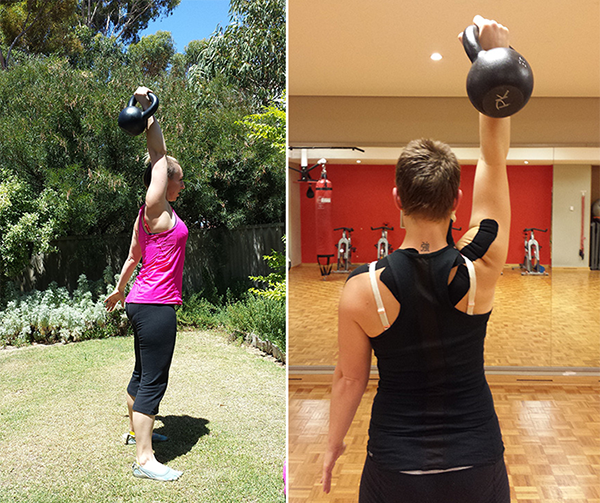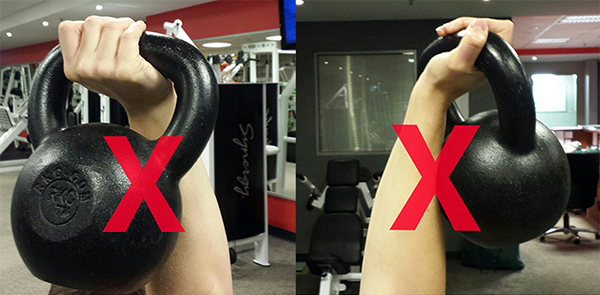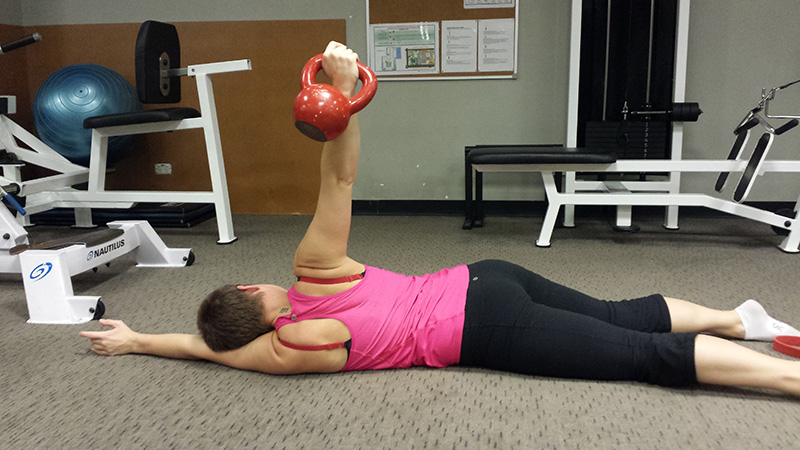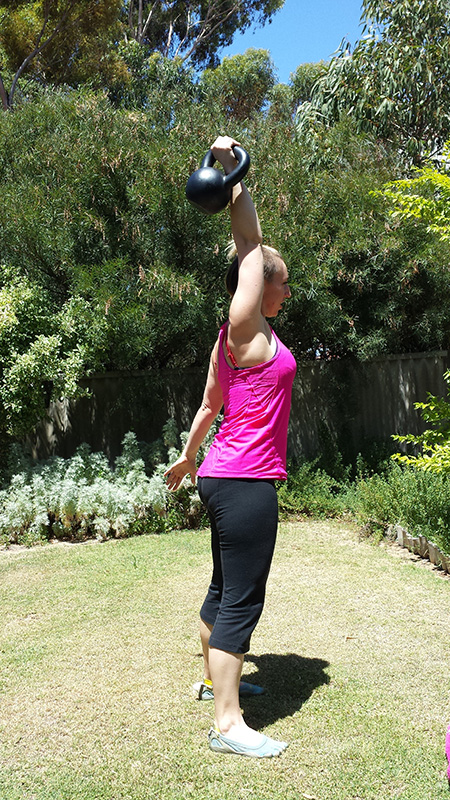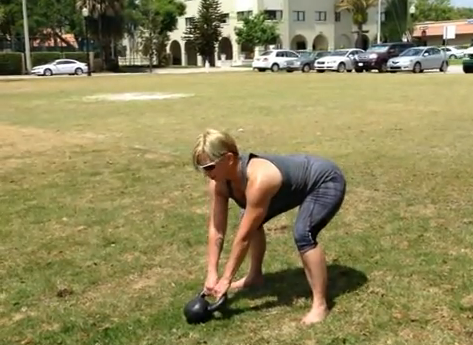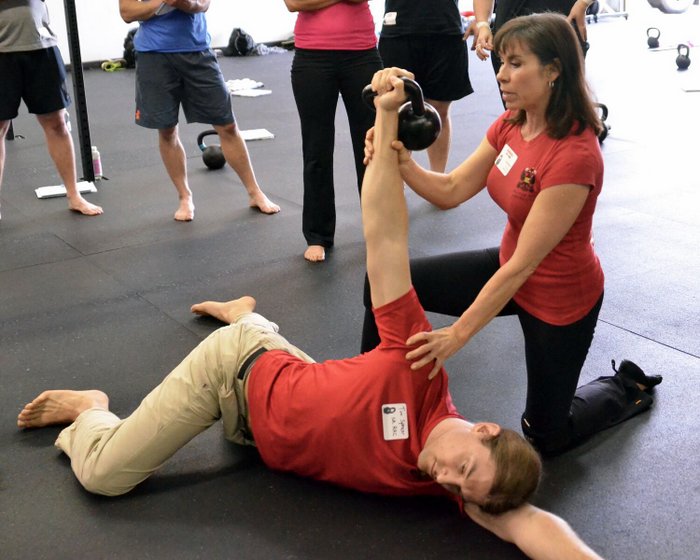
As I travel around teaching HKC and RKC workshops, I notice a common problem (theme – challenge), the sloppy start/stop of a kettlebell ballistic lift.
Imagine this scenario: someone is getting set up to swing; it doesn’t matter if it’s 2-handed, single arm or double. They stand over the kettlebell, lift it up, and rock it back a couple of times between their legs and THEN swing it back far enough to load their hips and explode up.
What’s wrong with this picture? The set-up was not correct. It was not focused or properly executed. There must be an intention and preparation before the start of the pull—before anything happens.
I like to say in regards to all kettlebell lifts, “You’re only as good as your set-up”.
Here is the correct way to start a swing (clean or snatch):
- Place the kettlebell a foot or two in front of you.
- Bend forward and grab the kettlebell handle.
- Pull the kettlebell slightly toward you, while engaging your lats.
- Set your weight way back on your heels, while keeping your feet planted & spine neutral.
- “Hike” the kettlebell back behind you—fast.
- Explode your hips forward and feet down into the ground. Let your arms be propelled forward by the force of the hips.
That’s it. Simple. No lifting the kettlebell up and rocking it a couple of times before hiking it back and exploding up. One crisp explosive hike pass and forward movement is all it takes!
This is the same for ALL the kettlebell dynamic lifts; including double kettlebell swings and cleans.
Scenario #2: someone has just finished a great set of swings, but on the last rep they fall forward while rounding their back and then dropping the bell down in front of them. They nearly topple forward.
No further explanation is needed here, this is simply dangerous. The most common time for an injury to occur during any kettlebell exercise is on the last rep or while the kettlebell is being set down.
In both cases—the first rep or the last rep of a set—the lack of focus, intention and safety is to blame.
The answer to this problem is to training your single-rep or dead-stop swings. In essence that is what the single-rep is: the start and end of a swing, clean or snatch.
Programming single-rep sets is an easy way to reinforce good technique throughout a set of any ballistic lift.
The truth is, they are HARDER than continuous reps because you lose the assistance of gravity during the backswing. With single-rep workouts, each rep is initiated by the power of the lifter. The hips and lats have to work that much harder to generate the force to project the kettlebell up. Hence, an additional bonus is increased force production and explosive power. So this type of training is perfect for any athlete.
You can also modify single-rep workouts for any level kettlebell lifter.
Single-rep 2-handed swings are a progression to learning continuous swings, but for the advanced lifter, doing single rep heavy cleans or snatches or double swings and cleans, puts the burn in your butt!
Here are some workout examples (note: “SR” stands for Single Rep):
Beginner:
SR-Swings: 2-handed for 5 reps
Continuous: 2-handed for 10 reps
Repeat as long as you wish
OR use timed sets for 25-30 seconds of work to equal rest
Intermediate: (proficient with cleans and snatches)
SR-Swings 1-arm 5-10 reps left/right
Continuous 1-arm 10 reps left/right
SR- Cleans 1-arm 5-10 reps left/right
Continuous 1-arm 10 reps left/right
Repeat as long as desired or timed sets
2nd workout
SR-Swings 1-arm 5-10 left/right
SR- Cleans 1-arm 5-10 left/right
SR-Snatch 1-arm 5-10 left/right
Repeat as long as desired or timed sets
Advanced
SR-double swings 5-10 reps
SR-double cleans 5-10 reps
Repeat as desired or timed sets
***
Andrea Du Cane is a Master RKC Kettlebell Instructor, CK-FMS, CICS, and RIST, ZHealth certified, she has a BA in Psychology from the University of Minnesota and is also a Pilates instructor. She is the author of several books and dvds including The Ageless Body, The Kettlebell Boomer, and The Kettlebell Goddess Workout. She has over twenty years of aerobics, weight training and fitness experience, with an additional background in… Read more here.
